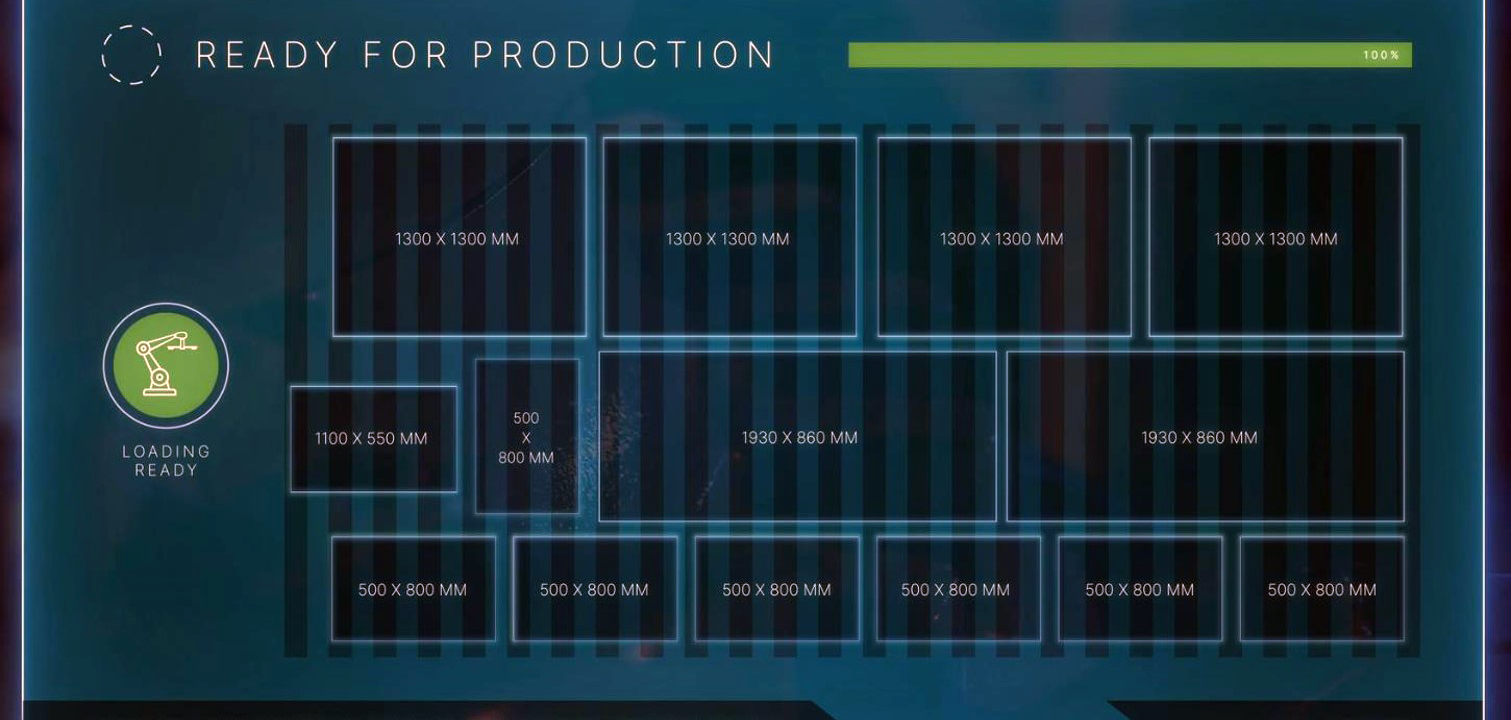
Welche Glasverarbeitungsprozesse profitieren am meisten von der Automatisierung? In diesem Blog konzentrieren wir uns auf einige besonders vielversprechende Anwendungsbereiche.
Wie wir im Blog „Warum Automatisierung in der Glasverarbeitung?“ erfahren haben, haben moderne automatisierte Systeme das Potenzial, die Produktion zu verbessern, Qualitätsstandards zu erhöhen, Kosten zu sparen und die Sicherheit in praktisch jeder Phase der Glasverarbeitung zu erhöhen. Von der Vorverarbeitung bis zur Herstellung von Isolierglas, beim Glas vorspannen, beim Glas laminieren und darüber hinaus lässt sich die heutige Automatisierung leicht an die unterschiedlichen Bedürfnisse und Produktionsarten der glasverarbeitenden Unternehmen anpassen.
Sehen wir uns nun spezifische Anwendungsbereiche an, in denen die Automatisierung Arbeitsabläufe rationalisiert, die Effizienz verbessert und die Produktionssteuerung optimiert.
Automatisiertes Be- und Entladen von Glas
Unabhängig von der Art der Glasverarbeitung sind automatische Glasbe- und -entlader die beste Lösung zur Optimierung der Arbeitsabläufe.
Diese Systeme erhöhen nicht nur die Arbeitssicherheit und die Produktionseffizienz, sondern senken auch den Energieverbrauch und verbessern die Gesamteffizienz.
Ein entscheidendes Merkmal dieser automatisierten Systeme ist ihre Fähigkeit, Glaselemente mit höchster Effizienz auf die Verarbeitungslinie zu laden, indem sie alle Chargenmuster und spezifischen Produktionsanforderungen berücksichtigen.
Automatische Glasbe und -entlader müssen nahtlos in das Produktionssteuerungssystem eines Unternehmens integriert werden, um eine optimierte Produktionssteuerung zu gewährleisten. Die Optimierung eines solchen Systems zur Erfüllung der einzigartigen Produktionsanforderungen sollte jedoch nur von jemandem durchgeführt werden, der den Prozess genau kennt.
Chargenoptimierung
Lösungen zur automatischen Chargenoptimierung erstellen die effizientesten Chargenmuster für die Art und die Verarbeitungsanforderungen der in der Produktion befindlichen Gläser. Dies verbessert die Effizienz, senkt den Energieverbrauch und erhöht die Gesamtkapazität.
Diese Systeme sind besonders vorteilhaft für Vorspann- und Laminieranlagen, bei denen viele Variablen für den Prozess entscheidend sind.
Damit Lösungen zur Chargenoptimierung effektiv sind, müssen sie nahtlos mit dem Produktionssteuerungssystem des Unternehmens kommunizieren. Benutzerfreundlichkeit ist von entscheidender Bedeutung. Selbst Bedienpersonal mit nur wenig Erfahrung in der Glasverarbeitung sollten in der Lage sein, sie einfach zu bedienen.
Pufferung
Ein Puffersystem sammelt Glaselemente mit unterschiedlichen Produktionsparametern vor der Verarbeitung in speziellen Bereichen.
Bestimmte Prozesse müssen zwischengespeichert werden, um eine größtmögliche Effizienz zu gewährleisten. Ein solcher Prozess ist das Beladen eines Vorspannofens.
Moderne automatisierte Pufferlösungen sorgen für einen optimierten Durchfluss von Glasstücken durch den Ofen, verwalten Schwankungen bei den Produktionsparametern und verhindern potenzielle Engpässe. Sie erhöhen auch die Gesamtkapazität und Energieeffizienz.
Glasverarbeitende Unternehmen haben mehrere Möglichkeiten, ihre Effizienz zu steigern. Die Einführung von Automatisierungslösungen für die Verarbeitung trägt wesentlich zu dieser Transformation bei.
Es ist jedoch nicht notwendig, alles auf einmal zu automatisieren. Wenn Sie bereit sind, beginnen Sie mit einem kleinen Schritt, wie der Automatisierung einer Produktionslinie oder eines bestimmten Teils des Prozesses, und nehmen Sie dann nach und nach einen weiteren Schritt in Angriff. So könnte beispielsweise die Einführung eines automatischen Laders für eine Flachglas-Vorspannlinie ein einfacher erster Schritt in Richtung einer vollständigen Automatisierung sein.
Für weitere praktische Einblicke in die Prozessautomatisierung und ihr Potenzial, Ihre Betriebsabläufe zu verändern, laden Sie den untenstehenden umfassenden Leitfaden herunter.
Würde die Automatisierung der Verarbeitung für Sie von Vorteil sein? Machen Sie dieses kurze Quiz, um es herauszufinden!
Für den Glastory-Newsletter anmelden
Wir beantworten Ihre Fragen zur Glasverarbeitung. Teilen Sie uns Ihre Herausforderungen mit und wir versprechen, unser Bestes zu tun, um Ihnen zu helfen.
Comments are closed.